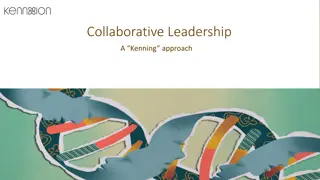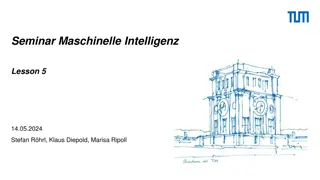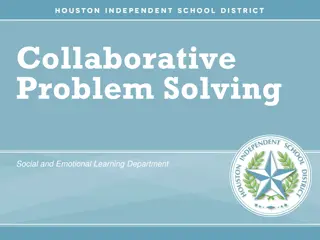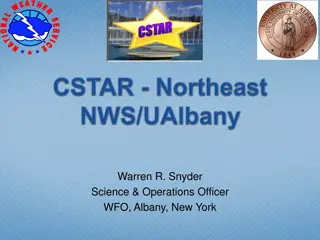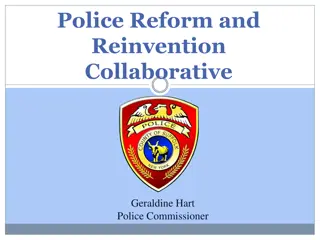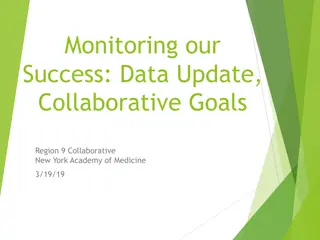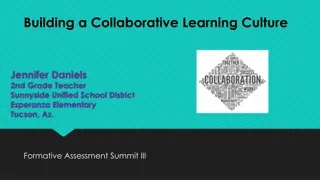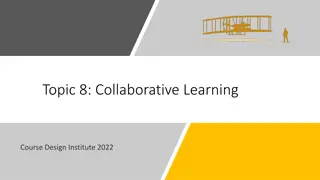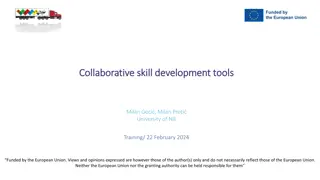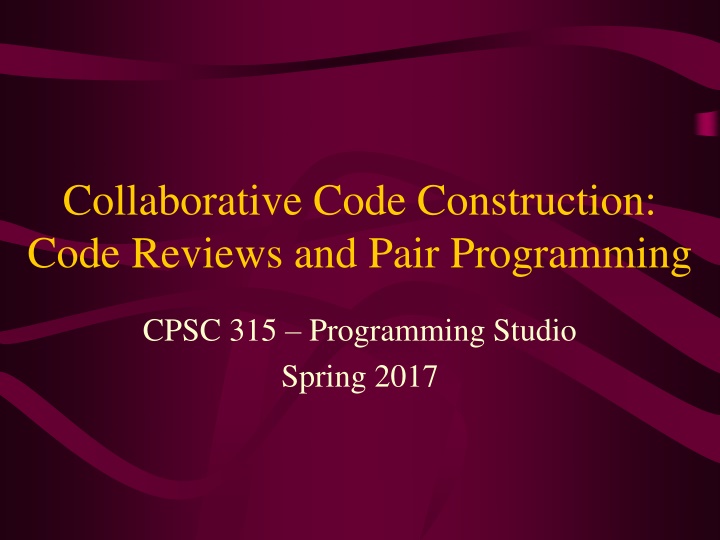
Effective Collaborative Code Construction and Reviews
"Discover the advantages of collaborative construction through code reviews and pair programming. Learn how team collaboration enhances error detection, improves code quality, and boosts overall project efficiency."
Download Presentation

Please find below an Image/Link to download the presentation.
The content on the website is provided AS IS for your information and personal use only. It may not be sold, licensed, or shared on other websites without obtaining consent from the author. If you encounter any issues during the download, it is possible that the publisher has removed the file from their server.
You are allowed to download the files provided on this website for personal or commercial use, subject to the condition that they are used lawfully. All files are the property of their respective owners.
The content on the website is provided AS IS for your information and personal use only. It may not be sold, licensed, or shared on other websites without obtaining consent from the author.
E N D
Presentation Transcript
Collaborative Code Construction: Code Reviews and Pair Programming CPSC 315 Programming Studio Spring 2017
Collaborative Construction Working on code development in close cooperation with others Idea Developers don t notice their own errors very easily Others won t have the same blind spots Thus, errors caught more easily by other people Takes place during construction process
Benefits to Collaborative Construction Can be much more effective at finding errors than testing alone 35% errors found through testing through low-volume Beta level 55-60% errors found by design/code inspection Finds errors earlier in process Reduces time and cost of fixing them Provides mentoring opportunity Junior programmers learn from more senior programmers
More Benefits Creates collaborative ownership No single owner of code People can leave team more easily, since others have seen code Wider pool of people to draw from when fixing later errors in code May result in more thoughtful coding Knowing others will see/review your code
Some Types of Collaborative Construction Formal inspections Walkthroughs Code reading Pair programming
Code Reviews Method shown to be extremely effective in finding errors Ratio of time spent in review vs. later testing and error correction ranges from 1:20 to 1:100 Reduced defect correction from 40% of budget to 20% Maintenance costs of inspected code is 10% of non- inspected code Changes done with review: 95% correct vs. 20% without! Reviews cut errors by anywhere from 20% to 80% Several others (examples from Code Complete)
Reviews vs. Testing Reviews find different types of problems than testing Unclear error messages Bad commenting Hard-coded variable names Repeated code patterns Only high-volume beta testing (and prototyping) find more errors than formal inspections Inspections typically take 10-15% of budget, but usually reduce overall project cost
Formal Code Reviews Can take somewhat different forms in different organizations There are some characteristics true of all code reviews Described next The exact details of how it is handled can vary We will look at one method
Formal Inspection Characteristics Focus on detection, not correction Reviewers prepare ahead of time and arrive with a list of what they ve discovered Don t meet unless everyone is prepared Distinct roles assigned to participants Hold to these roles during review Data is collected and fed into future reviews Checklists focus reviewers attention on common past problems
Roles during Inspection Moderator Author Reviewer(s) Scribe Management 3 people min ~6 people max
Roles during Inspection Moderator Author Reviewer(s) Scribe Management Keeps review moving Not too fast or slow Technically competent Handles all meeting details distributing design/code distributing checklist Setting up room Report and followup 3 people min ~6 people max
Roles during Inspection Moderator Author Reviewer(s) Scribe Management Plays minor role Design/Code should speak for itself Should explain parts that aren t clear But this alone can be a problem Explain why things that seem to be errors aren t Might present overview 3 people min ~6 people max
Roles during Inspection Moderator Author Reviewer(s) Scribe Management Interest in code but not author Find errors during preparation Find more errors during meeting 3 people min ~6 people max
Roles during Inspection Moderator Author Reviewer(s) Scribe Management Records errors found and action assigned or planned Should not be moderator or author 3 people min ~6 people max
Roles during Inspection Moderator Author Reviewer(s) Scribe Management Usually should not be involved Changes from technical to political meeting Might need to see results of meeting 3 people min ~6 people max
Stages of Inspection Planning Author gives code/design to moderator Moderator then: chooses reviewers ensures code is appropriate for review e.g. line numbers printed distributes code and checklist sets meeting time
Stages of Inspection Overview If reviewers aren t familiar with code at all, can have overview Author gives a brief description of technical requirements for code Separate from review meeting Can have negative consequences Groupthink Minimize points that should be more important
Stages of Inspection Preparation Reviewers work alone to scrutinize for errors Checklist can guide examination Depending on code, review rate varies 125 to 500 lines per hour Reviewers can have varied roles be assigned perspective e.g. evaluate from user s view, or from designer s view evaluate different scenarios e.g. describe what code does, or whether requirement is met read code/design in certain order/way e.g. top-down, or bottom-up
Stages of Inspection Inspection Meeting A reviewer chosen to paraphrase design or read code Explain all logic choices in program Moderator keeps things moving/focused Scribe records errors when found Record type and severity Don t discuss solutions! Only focus is on identifying problems Sometimes don t even discuss if it actually is an error if it seems like one, it is one No more than 1 per day, about a 2 hour limit
Stages of Inspection Third Hour meeting Depending on interest/stake of reviewers, possibly hold a separate followup meeting Immediately after inspection meeting Focus here is to discuss possible solutions
Stages of Inspection Inspection Report Moderator produces report shortly after meeting List of defects, types, and severity Use this report to update checklist to be used in future inspections List main types of errors commonly found No more than 1 page total length Collect data on time spent and number of errors Helps evaluate how well things work, justify effort
Stages of Inspection Rework Moderator assigns defects to someone to repair Usually the author
Stages of Inspection Follow-Up Moderator verifies that work assigned was carried out. Depending on number and severity of errors, could take different forms: Just check with author that they were fixed Have reviewers check over the fixes Start cycle over again
Adjusting Inspections Over Time Organizations will have characteristics of code unique to them Density of code determines how fast reviewers and inspection meeting can go (application tends to be faster than system code/design) Checklists highlight common problems Measure effect of any changes Evaluate whether they actually improved process
Inspections and Egos Point is to improve code Not debate alternative implementations Not discuss who is wrong/right Moderator needs to control discussion Author needs to be able to take criticism of code May have things mentioned that aren t really errors Don t debate and defend work during review Reviewers need to realize the code is not theirs Up to author (or someone else) to determine fix
Walkthroughs Alternative to formal code inspection Vague term, many interpretations Less formal than inspections, though Usually hosted and moderated by author Chance for senior and junior programmers to mix Like inspection: Preparation required Focus on technical issues Goal is detection, not correction No management
Walkthrough Evaluation In best cases, can match formal code inspections in quality In worst cases, can lower productivity, eating more time than saved Can work well for large groups Can work well when bringing in outsiders
Code Reading Alternative to inspections and walkthroughs Author gives out code to two or more reviewers They read independently Meeting held for everyone Reviewers present what they ve found, but don t do a code walkthrough
Code Reading Evaluation Most errors tend to be found in individual review Reduces effort and overhead of managing group dynamics at inspection meeting Maximizes productive effort per person time not wasted in meetings where others are speaking Works well for geographically distributed reviewers
Pair Programming Basic idea: One person codes with another looking over the shoulder. Person at keyboard writes code Second person is active participant Watch for errors Think strategically about code What s next? Is code meeting overall goal/design? How to test this code
Successful Pair Programming Standardize coding style Don t force pairs for easy tasks Rotate pairs and work assignments frequently Use good matches Avoid personality conflicts Avoid major differences in speed/experience Set up good work environment At least one pair member should be experienced
Evaluating Pair Programming All the traditional collaborative benefits Seems to achieve quality level similar to formal inspection Tends to be higher quality code Holds up better during crunch time fewer shortcuts taken that come back to haunt
Evaluating Pair Programming Tends to decrease development time Code written faster, fewer errors Estimates of 45% time reduction Tends to cost more if fully implemented 10-25% higher costs So, can be a time/cost tradeoff





